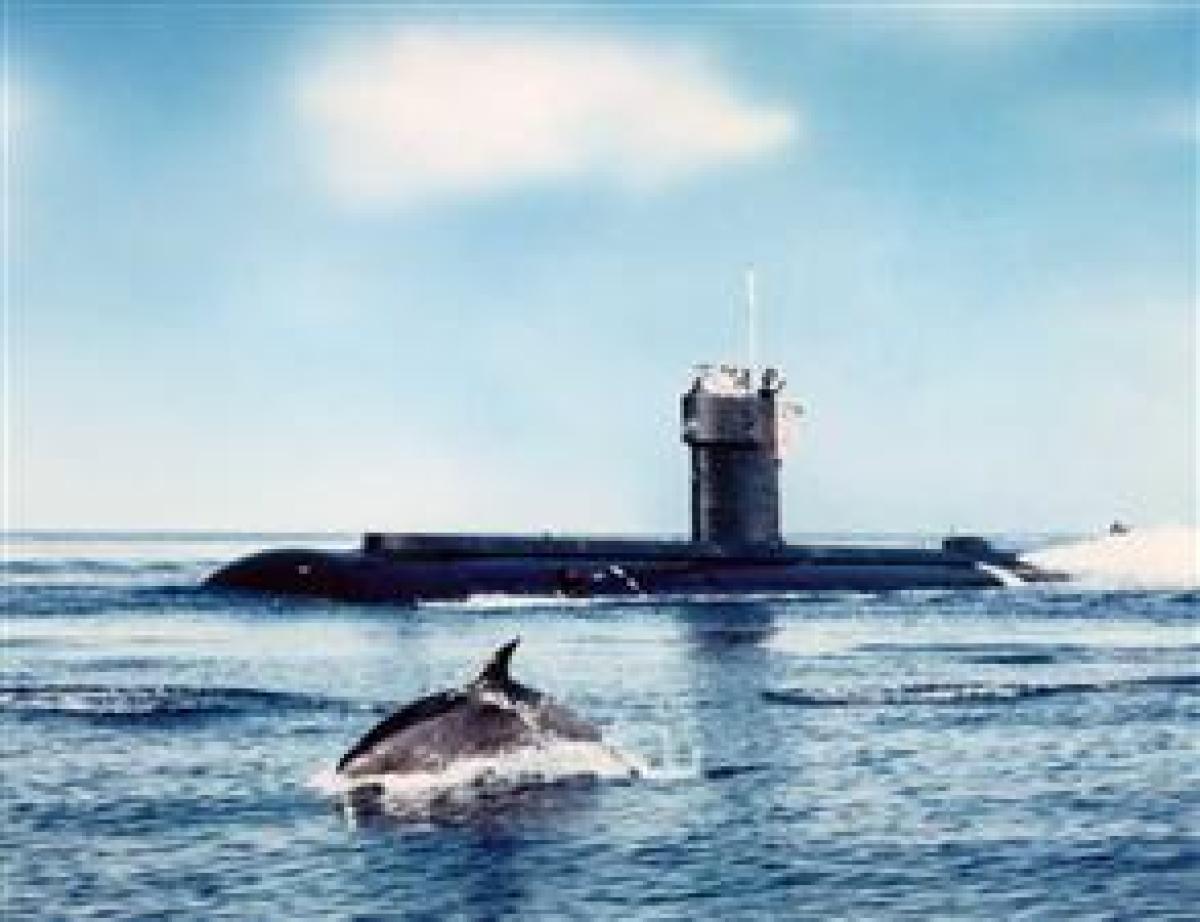Though there was little public notice at the time, the diesel-boat era ended in the U.S. Navy on 15 January 2007 with the decommissioning of the USS Dolphin (AGSS-555). The real curtain had come down a few months earlier, in September 2006, when the last crew left and the inactivation period began.
What an era it was. The submarine service started in 1900 with the gasoline-powered Holland (SS-1). The first boat equipped with diesels was the USS F-1 (SS-20), which was commissioned in 1912. During the next 42 years—a period that encompassed two World Wars—the diesel submarines compiled an enviable record. Even so, there were limitations in the capabilities of vessels that had to come to the surface frequently. They needed to ingest copious amounts of air to run their engines and charge the storage batteries that propelled them when they were underwater, and for their crews to keep breathing.
In 1954 the Navy commissioned the Nautilus (SSN-571), the first nuclear-powered undersea craft and thus the first true submersible. She could cruise for weeks at a time submerged, generating oxygen for her crew so they could operate without exposure to the atmosphere. Over time, more and more of the nuclear craft went into service, both attack submarines and those capable of firing ballistic missiles armed with nuclear warheads. And, over time, more and more diesels were phased out. The last full-fledged diesel attack boat, the Blueback (SS-581), departed in 1990.
That left the Dolphin as the last survivor, and she lived into the 21st century by carrying out her missions as a deep-diving research vessel. In recent years, diesel-only submariners were no long available to crew her. Those veterans had long since retired or gone on to other pursuits. The men who cycled through the boat in her final years of service had earned their dolphins in nuclear vessels and brought their skills with them to the older breed. Since the nuclear ships are equipped with auxiliary diesels, the machinist's mates had learned there to operate the engines that powered the Dolphin.
In the spring of 2006, as the boat's period of active service was winding down, I had the pleasure of going aboard for a hands-on visit that included a climb down into the engine room. Each of her 400-horsepower diesels was the type used to power buses on city streets—not exactly the forefront of technology, but she also had cutting-edge components. Commissioned in 1968, this boat sported some interesting anachronistic juxtapositions.
She still had the same mainframe sonar that was original equipment. But her role as an experimental boat also meant that she had state-of-the-art gear on board for testing. For instance, she had an obstacle-avoidance sonar and another used for bottom mapping. Her deep-diving capability enabled her to reach the bottom even when it was more than 3,000 feet below the surface of the sea. Her last operational skipper, Commander Andy Wilde, had to master the seamanship required to moor on the seafloor for some of her research work on behalf of the Navy and other "customers." This was a far cry from his previous billet as executive officer of the 18,700-ton, 560-foot boomer USS Maine (SSBN-741).
Probably the most striking thing about the Dolphin was her size—or actually the lack of it. She was only 152 feet long and displaced 861 tons, far less than the nuclear-powered behemoths now roaming the seas. Her mess compartment, which was used at various times by both enlisted crew members and the officers, had a table that seated only six. She had 45 bunks for a crew of 52; that required hot-bunking at times and leaving some crewmen ashore at others. The officers' room/captain's office was a space with a desk, a chair, and three bunks stacked vertically. Befitting the privilege that went with rank, skipper Wilde got the middle bunk.
Over bug juice and coffee at that small mess table, the skipper and chief of the boat, Joe Eller, talked about their roles in this one-of-a-kind and last-of-a-kind. They talked of their pride in the crew and the submarine, the honor of serving in the Dolphin, but also the lament that their future on board grew shorter day by day. Their remaining operations would be few, and they were winding down the clock on the time when they would know each other as shipmates.
A few months after I met these men, they gathered in their dress uniforms for the inactivation ceremony on 22 September 2006. Many others who had worn dolphins on board previous boats gathered to pay honor to this last of the breed. They shared the hope that the boat would be preserved as a museum, and that hope is ongoing. On that day, the last crew of the Dolphin said their good-byes to their boat and to each other. The Navy's last diesel submarine remains with them now only in their memories.



